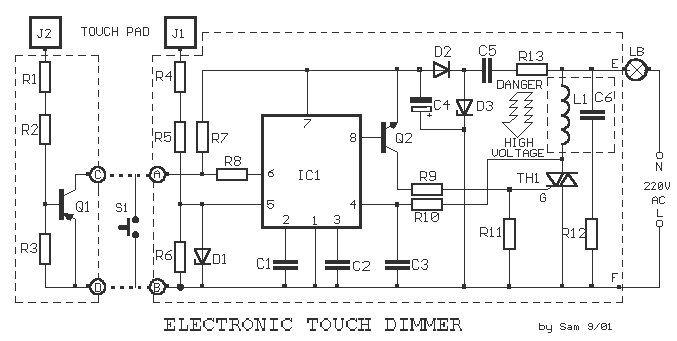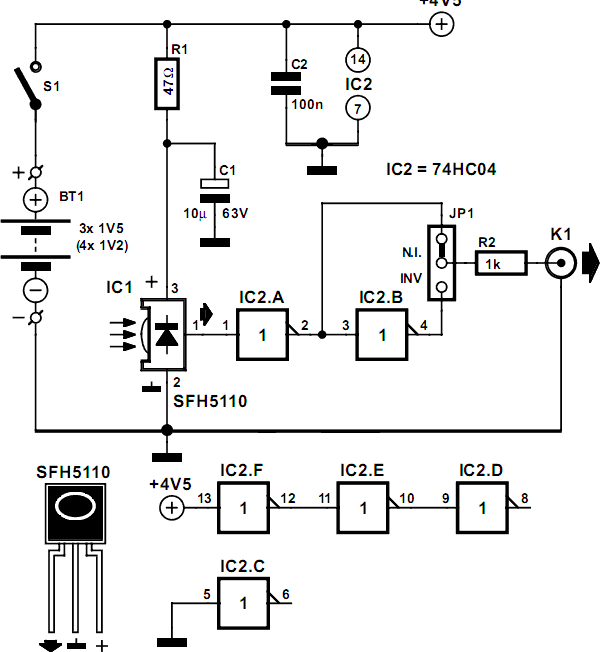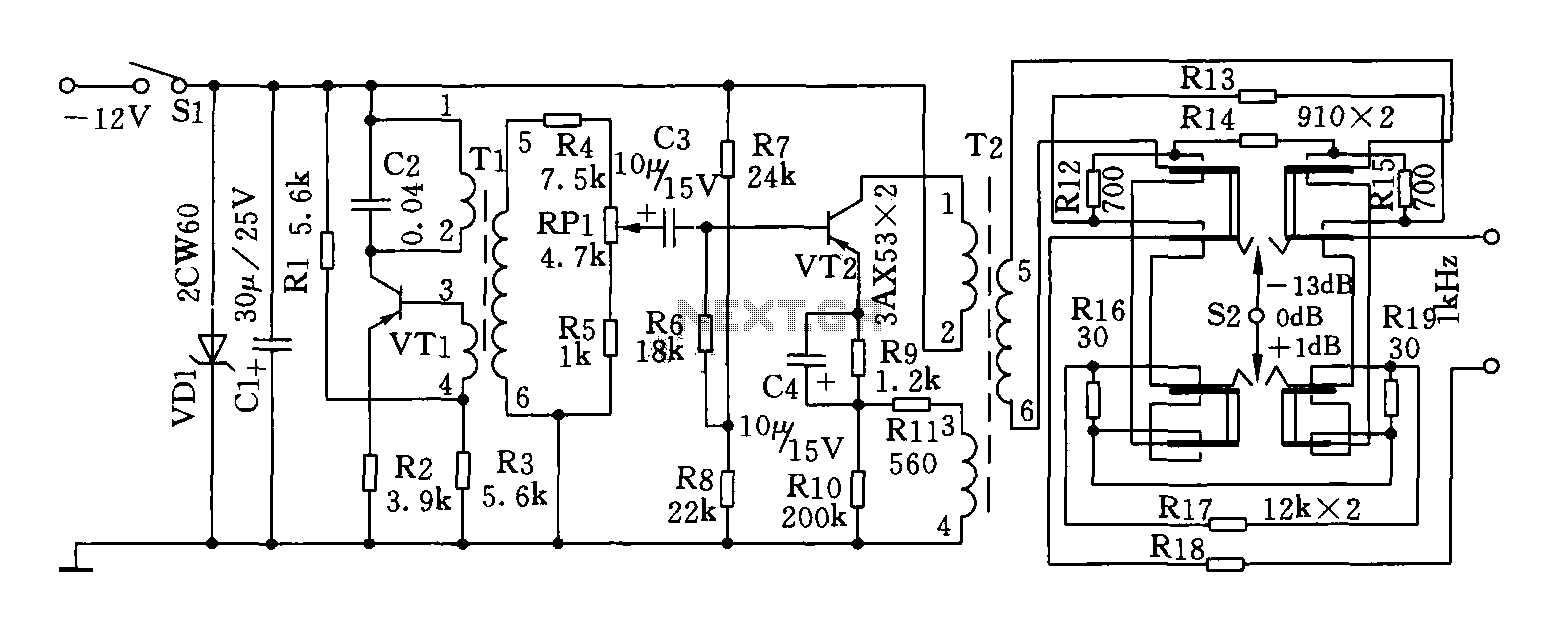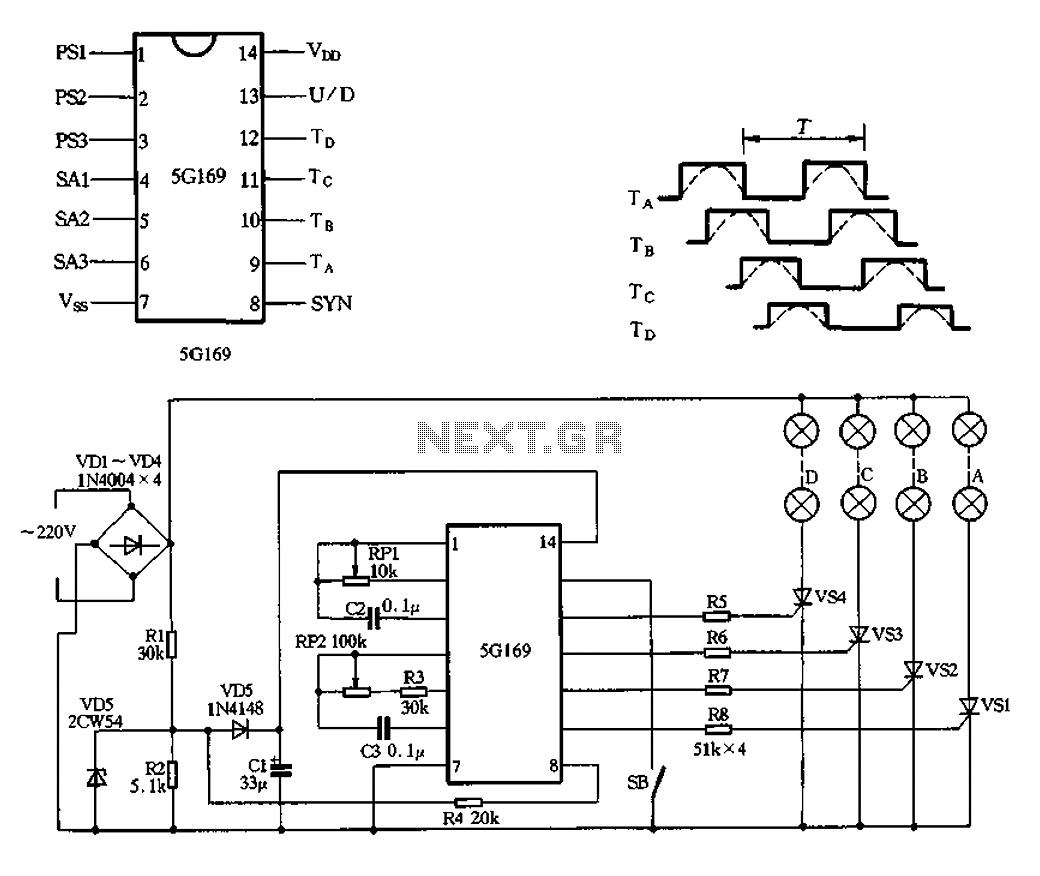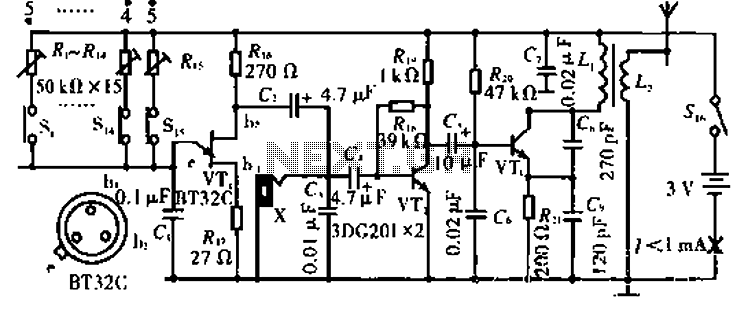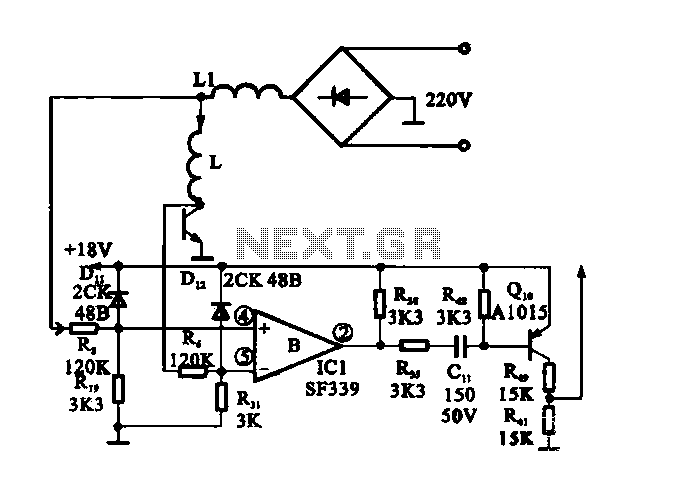
Infrared receiver circuit diagram with a pre-integrated amplifiers
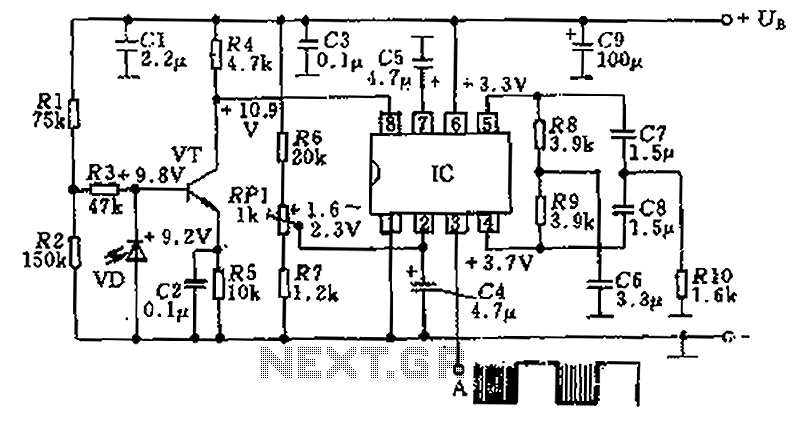
The circuit utilizes an integrated amplifier, resulting in a simple and compact design. The TDA4050 IC is employed, where a weak signal is received by the infrared photodiode (VD) and first passes through a transistor amplifier. The circuit is enhanced by a converging lens with a diameter of approximately 15mm and a focal length of around 30mm, which increases the effective distance by 20 to 30 times. A capacitor (C) is included to effectively attenuate interfering signals in the low frequency range of 50 to 100 Hz.
The described circuit leverages the TDA4050 integrated circuit, which is designed for audio amplification and signal processing applications. The infrared photodiode (VD) acts as the primary sensor, converting infrared light into an electrical signal. This signal is initially weak and requires amplification for effective processing. The inclusion of a transistor amplifier serves to boost this signal before it reaches the integrated amplifier.
The converging lens, with its specified diameter and focal length, plays a critical role in enhancing the circuit's operational range. By focusing the incoming infrared light onto the photodiode, the lens increases the amount of light captured, thereby improving sensitivity and allowing for detection over greater distances—up to 30 times the original range.
Furthermore, the capacitor (C) is strategically placed within the circuit to filter out low-frequency noise, specifically in the range of 50 to 100 Hz, which is often prevalent in electronic environments. This noise reduction is essential for maintaining signal integrity, particularly in applications where precise signal detection is paramount.
Overall, this circuit design exemplifies an effective integration of optical and electronic components, optimizing performance while maintaining a compact footprint. The combination of the TDA4050, photodiode, transistor amplifier, and lens system creates a robust solution for infrared signal detection and amplification. As shown, the circuit due to the integrated amplifier, so the circuit is simple, small size. TDA4050 IC used here, a weak signal is received by the infrared photodiode VD, firs t passes through the transistor amplifier. As a result of the converging lens (diameter of about 15mm, a focal length of about 30mm), and therefore the effective distance can be increased 20 to 30 times. Capacitance C can effectively reduce interfering signals in the low frequency range of 50 ~ 100Hz.
The described circuit leverages the TDA4050 integrated circuit, which is designed for audio amplification and signal processing applications. The infrared photodiode (VD) acts as the primary sensor, converting infrared light into an electrical signal. This signal is initially weak and requires amplification for effective processing. The inclusion of a transistor amplifier serves to boost this signal before it reaches the integrated amplifier.
The converging lens, with its specified diameter and focal length, plays a critical role in enhancing the circuit's operational range. By focusing the incoming infrared light onto the photodiode, the lens increases the amount of light captured, thereby improving sensitivity and allowing for detection over greater distances—up to 30 times the original range.
Furthermore, the capacitor (C) is strategically placed within the circuit to filter out low-frequency noise, specifically in the range of 50 to 100 Hz, which is often prevalent in electronic environments. This noise reduction is essential for maintaining signal integrity, particularly in applications where precise signal detection is paramount.
Overall, this circuit design exemplifies an effective integration of optical and electronic components, optimizing performance while maintaining a compact footprint. The combination of the TDA4050, photodiode, transistor amplifier, and lens system creates a robust solution for infrared signal detection and amplification. As shown, the circuit due to the integrated amplifier, so the circuit is simple, small size. TDA4050 IC used here, a weak signal is received by the infrared photodiode VD, firs t passes through the transistor amplifier. As a result of the converging lens (diameter of about 15mm, a focal length of about 30mm), and therefore the effective distance can be increased 20 to 30 times. Capacitance C can effectively reduce interfering signals in the low frequency range of 50 ~ 100Hz.
